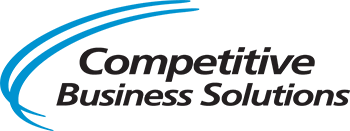Accelerating AS9100 Implementation Using Lean
Overview
Agile Space Industries (ASI) entered a significant growth mode and was challenged to achieve AS9100 Quality Management System (QMS) certification within a 10-month period to gain access to several new opportunities. As a small business, where people wear many hats, resource availability added another layer of complexity to the implementation process. The result was a uniquely creative, right-sized approach using lean methodology.
The Challenge
It is not uncommon for a company to seek AS9100 certification to pursue a new market segment or to respond to a customer requirement. These opportunities can require an accelerated approach to implementation and often draw on already taxed resources, especially in smaller organizations. This particular case included not only a short timeline within a small business but also the added challenge of a team with no dedicated quality function. The leadership lacked understanding of AS9100 and planned to rely on one employee with prior AS9100 exposure to lead the charge, while tactical needs diverted focus from the implementation activity.
“I understand schedules are busy, and it may be difficult to carve out all the time, but I ask that we all do what we can to be present and engaged at these sessions.”
—Management Representative
With a strong research and development presence hampered by a lack of production activity, this implementation had to be creative yet still provide evidence that requirements were being met. A lean thinking approach to both system and documentation was clearly the only way to accomplish the goal within the given time window and with the available support. Accelerating from 0 to 100 in roughly 6 months—the target was established!
The Approach
With COVID-19 restrictions, this implementation was far from typical. The initial review of the existing systems, documentation and team responsibilities was all done remotely. With a standard project plan in place, training began via MS-Teams to establish the knowledge base for the leadership team. During the training, it became obvious that the team was distracted and that this would require a very customized approach. As hats were passed between individuals, resource constraints continued to extend due dates, and weekly sessions were established to reach critical milestones.
While most administrative and documentation processes fall in the non-value-added portion of the lean spectrum, the team was challenged to use a 5S-style necessary vs. unnecessary strategy to determine which procedures and processes really added value to the organization. Likewise, waste such as rework, overprocessing and overproduction were targeted, and underutilized human capital was repurposed to ensure the most efficient path forward.
After only 6 weeks of initial activity, the AS9100 implementation schedule was already behind as resources were redeployed to accommodate existing customer needs. This prompted a shift to dedicated working sessions in which documentation and systems were created to support the QMS requirements. Activities were broken down into smaller segments to fit among existing commitments, and discussions regarding system components were streamlined to be brief and extremely efficient.
Using Visual Management tools, CBS introduced a dashboard to track the implementation progress and provide easy accountability to the leadership team. This dashboard allowed the team to quickly understand:
- accomplishments from the previous week
- expectations for the upcoming week
- progress of the key system documentation
This tool provided the structure needed to take advantage of even the smallest of schedule slots to accomplish tasks in a prioritized and organized manner. The implementation team was able to make significant progress in a matter of weeks and complete the majority of the QMS documentation.
Following 3 months of dedicated, focused attention, the ASI team emerged with a right-sized system that met the AS9100 requirements but did not require excessive processes or paperwork to achieve effectiveness. The initial certification audit resulted in recommendation for certification and concluded a concentrated 4-month surge to create a streamlined QMS that was woven into the existing fabric of the organization. The Quality System became an integrated part of the Business Systems with a lean-minded foundation.
“I want to commend [CBS] for their efforts. They kept things on track, coached our team perfectly, and kept the tone just right. Ultimately, the results speak for themselves. We would not be here if it were not for them.”
—Andrew Thompson, Chief Operating Officer
Conclusion
Quality Management System (QMS) certification is frequently viewed as a daunting task that involves reams of useless procedures and work instructions that simply drive overhead for the business.
By using lean thinking to weave the Quality System into the Business Operating System and eliminate unnecessary waste, the implementation can not only be accomplished over a few months, it can provide an efficient system for mitigating risk within a manufacturing or service business. Whether it is ISO9001, AS9100 or any number of derivatives, the right approach can yield a very effective system with an accelerated timeline.
About Competitive Business Solutions (CBS)
Competitive Business Solutions consultants are masters of world-class operating and lean sigma principles. Creative problem-solvers throughout the improvement process—from initial discovery and strategic solution development to implementation and knowledge transfer—CBS consultants take pride in their client relationships, working side-by-side with every member of onsite teams to identify performance issues quickly and effectively, with significant and sustainable business improvement as a result.
Case Studies:
Join our community.
Sign up now to receive future news.
